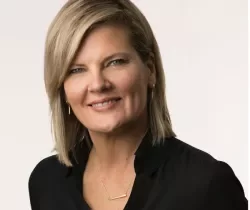Universities and colleges have played a unique role throughout the pandemic. Many have acted as a voice of authority and trust, conducting world-leading research, analyzing findings, tracking the outbreak across the globe, and sharing this information with us across our news networks.
At the same time, these institutions recognized that the lives of their students were changing in rapid and tremendous ways, and simultaneously transitioned to virtual classes both quickly and seamlessly.
How, then, have their event programs been faring amid all of this? From donor and alumni networking events, to football games and homecomings, a single higher ed institution will typically host hundreds of in-person events each year.
Re-creating and reinvigorating in the process
Along with the necessary exploration of technical delivery, institutions have had to consider the comfort levels and delivery preferences expressed by their various audiences – which typically span multiple generations. To its credit, the industry has been very open and eager to push the creative boundaries to ensure maximum engagement across the board.
We’ve seen a university bring together donors for an online tour of their permanent museum collection, another created family fun events through their early childhood education programs, others have opened select classes up to alumni so that they can connect with rock-star faculty and students. One institution not only shifted an in-person local career networking event online, it also invited the general alumni population to attend, too. Attendee numbers grew from 60 to 400, and there was representation from six different U.S. states.
At a time when we all felt closed off from the world, these varied approaches offered a fresh take on the typical conference call event, and they helped to keep audiences engaged with the opportunity to virtually visit with other people and places through the quarantine.
Dialing up the personalization piece
With audience expectations higher than ever as we begin to emerge from the pandemic, we’re counseling clients to seize this accelerated digital comfort and reboot their engagement strategies with varied modalities that ensures inclusivity and engagement – this often means hybrid events.
For hybrid to work in the higher ed world, we need to recognize that a different event architecture is required for live and virtual experiences. Simply streaming a one-day in-person conference to a virtual audience, for example, won’t cut it. What would they do during the in-person networking breaks, or how could they engage with in-person speakers? Not to mention the fatigue from screen overload that so many of us are experiencing.
We’re finding that one way to respond to these challenges is to adopt a hybrid approach where no audience is an afterthought. Sessions from the in-person event are packaged up into easily digestible, bite sized content for virtual viewers in real time – so they receive their own exclusive content, and networking opportunities are geared towards a digital environment.
Catering to changing modes of event consumption
It’s been amazing to see attendee numbers rise when an event goes virtual or includes a virtual component, but the pandemic has also prompted new preferences and behaviors around how higher ed audiences consume event content.
In 2021, it's essential that virtual and hybrid events are highly personalized, include a mix of relevant ideas and topics and programs need to be tight. There must also always be a clear purpose for tuning in – and events should stay true to an institution’s narrative at all times.
While nothing will ever replace the sense of community, connection and inspiration of an in-person event, some people have become accustomed to virtual, and I predict the need to design in-person events so they include elements that would otherwise be missed when tuning in virtually will rise exponentially this year.
Higher ed events have faced their fair share of challenges amid the pandemic, but the sector has also demonstrated its sheer resiliency, creativity and adaptability during these uncertain times. I’m confident that the best is yet to come, so here’s to a hybrid (and eventually everyone in-person) future!



Comments
Sarah- you should get the…
Sarah- you should get the students' and parents' perspectives.
Interesting article and…
Interesting article and focus on how events of all kinds have had to adapt to the pandemic. I would be interested to see the impact on donations and in-kind gifts has been affected by the lack of in-person events held at universities and colleges.
Add new comment